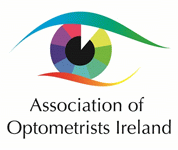Myopia (short-sightedness)
-
Distant objects appear blurred
-
Closer objects are clear
What Causes It?
Myopia is an extremely common condition. It occurs because either the power of the eye is too strong, or that the eye itself is too long. Either way, the image of the object you see is formed before it reaches the retina, and so is blurred. Myopia is easily corrected with glasses or contact lenses.
Hyperopia (long-sightedness)
-
Closer objects appear blurred
-
Distant objects are clear
What Causes It?
Hyperopia occurs because either the eye is not powerful enough, or the eye itself is too short. Either way, the image of the object you see is formed after it reaches the retina, and so is blurred. Hyperopic people can increase the power of their eyes by accommodating and making the image clear, although this becomes more difficult as you get older or if you do a lot of concentrated work. Hyperopia is easily corrected with glasses or contact lenses.
Astigmatism
-
Blurred vision
What Causes It?
Astigmatism is an eye condition that can occur in conjunction with myopia, hyperopia, or on its own. Astigmatism occurs when the front of the eye (cornea) is not perfectly spherical (often described as ‘rugby ball shaped’). It causes the image of the object you see to be focused at two different points, and so is blurred. Astigmatism is easily corrected using spectacles or contact lenses.
Presbyopia
-
Closer objects appear blurred
What Causes It?
Presbyopia is caused when the eye gradually loses its ability to see objects up close. It happens to everybody from around the age of 40 and gradually continues from then on. The main cause is that the lens in the eye becomes less supple and harder to change shape, and so makes close objects look blurred. As the changes happen so gradually, you don’t notice the effects immediately. But, over time, reading may become more difficult – you find yourself holding a book further from you to focus on the print. You may find you get headaches more often, as you struggle to focus. But help is at hand. Presbyopia is easily corrected using reading, varifocal, or bifocal glasses. Contact lenses are now also available.
Cataracts
-
A hazy view as the lens ages
What Causes It?
Cataract is a term used to describe the gradual ageing of the lens in the eye. When we are born the lens is perfectly clear and supple. As we age, the lens becomes more opaque and less supple. This has the effect of us needing more light in order to see as we get older, and objects generally appearing a little hazier. Sometimes the lens can become so opaque that it affects the vision, and causes problems such as glare (especially at night). If this occurs, a short surgical procedure to replace the opaque natural lens with a clear artificial lens can be performed and your vision usually improves immediately.
Dry Eye or Watery Eye
-
Watery eyes, feeling uncomfortable and gritty
What Causes It?
Dry eye or Watery Eye is a condition where either the eye does not produce enough tears, or the tears do not lubricate the eyes sufficiently. This makes the eyes feel uncomfortable, gritty, and sometimes makes the white of the eyes appear very red. Dry eye can affect anyone at any time, although it is more common as we get older. Confusingly one common symptom is the eyes watering excessively, especially in windy weather. Often, any symptoms can be relieved by using artificial tears (like Thealoz Duo or Hyabak) to lubricate the eyes better, although long term dry eye may need further investigation to rule out any general health problems. Dry eye can also contribute to Blepharitis – an inflammation of the eyelids, which can be treated with Blephaclean, Blephagel or eyebags.
Age-Related Macular Degeneration (AMD)
-
The decline of the retina
What Causes It?
Age-Related Macular Degeneration (or AMD) affects the area of the retina that deals with the most detailed vision. It generally affects people over the age of 65, and causes deterioration in central vision. There are two main types; dry and wet. Dry macular degeneration is far more common, progresses slowly and usually affects the vision more mildly. Wet macular degeneration is far less common, but has far more drastic changes, sometimes causing total loss of central vision in extreme cases. You can manage AMD by protecting your eyes from UV and Blue light (with sunglasses or contact lenses with UV filters). Plus, make changes to your lifestyle, like giving up smoking and eating a balanced diet with lots of bright coloured vegetables. For some types of AMD, dietary supplements such as Macushield, or Nutrof Total, can help too – and you can buy these in our stores.
Glaucoma
-
Causes a gradual decline in sight
What Causes It?
Glaucoma is the name given to a group of diseases, which cause progressive gradual degeneration of the optic nerve. Glaucoma is caused by a number of factors which can include high internal pressure of the eye and genetic factors. Glaucoma affects the peripheral vision, and often goes unnoticed by the patient. Very rarely, glaucoma can affect people very suddenly, making them feel sick and causing pain to the eyes; in these cases immediate urgent assessment is advised. Those patients with glaucoma, or those with family members who have glaucoma, are advised to have regular eye examinations.
Diabetes
-
Can leave you prone to cataracts and macular changes
What Causes It?
Diabetes is caused when the body is unable to properly regulate the amount of glucose in the blood. Symptoms can be very mild and so can be very difficult to spot. It’s really important that you control diabetes over the long term, otherwise it can affect the eyes by causing changes to the blood vessels of the retina. The blood vessels become more prone to bleeding, causing possible risks to the sight of the eye. Generally speaking, the earlier any diabetic changes are noticed in the eyes, the better the outcome after any treatment. People with diabetes are also more prone to cataract, glaucoma and macular changes, causing a reduction in vision. Because of this, diabetic patients are advised to have regular eye tests.


